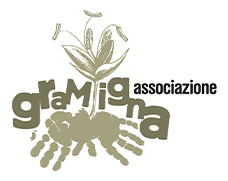EURECA
Good Practices
.jpg)
.jpg)
.jpg) Pictures:
Pictures:Alcântara water factory (Photo Águas do Tejo Atlântico)
Beirolas water factory (Photo Águas do Tejo Atlântico)
Chelas water factory (Photo Águas do Tejo Atlântico)
Beer produced with recycled drinking water (Photo Águas do Tejo Atlântico)
Water Factories and Lisbon Drainage Master Plan (LDMP)
Country:Main Subject:
Description:
The occurrence of floods caused by extreme precipitation has become frequent in Lisbon, especially in riverside areas, due to the increasing occupation of the territory and climate change.
Lisbon Drainage Master Plan (LDMP) aims to protect the city from large flows of rainwater, through the construction – ongoing until 2030 – of 6 km of tunnels, which act as rain collectors, and uses interbasin water transfers, mitigating the environmental, economic and social impacts of floods.
The LDMP includes anti-pollution basins that store the first rainwater that is more polluted due to contact with the waste deposited on the pavements. The water is taken to the city's three Water Factories for treatment. One of the anti-pollution basins will have a compartment that can subsequently guarantee a minimum flow of water feeding a mini-hydro plant that will produce energy to supply the Alcântara Water Factory. The LDMP includes the reinforcement and rehabilitation of the existing sanitation network.
The three Water Factories of Lisbon (Alcântara, Beirolas and Chelas) treat wastewater and rainwater through various physical-chemical and biological processes to separate solids and remove organic matter, phosphates, nitrates and pathogenic microorganisms. Part of this recycled water is subjected to ultraviolet radiation and used in urban irrigation, washing pavements, firefighting and in industry, through a distribution system with 55 km of adductor pipelines. Another part is returned to the water ecosystem, in Lisbon case to the Tagus River, under environmentally safe conditions.
But the potential for reusing this water is unlimited. When submitted to ozonation and reverse osmosis treatment, it can be used for human consumption, as is already the case in Lisbon, with the production of Vira brand beer.
Reference links:
LDMP
https://www.youtube.com/watch?v=pjFezZEMYIc
https://www.youtube.com/watch?app=desktop&v=yWG4t8m2tHU
https://www.youtube.com/watch?v=NbeNHvPi78c
https://lisboaparapessoas.pt/wp-content/uploads/2022/05/pgdl_brochura.pdf
https://planodrenagem.lisboa.pt/sobre-o-plano
Water Factories
https://www.aguasdotejoatlantico.adp.pt/content/tratamento-de-aguas-residuais
https://www.aguasdotejoatlantico.adp.pt/content/fabrica-de-agua
https://aguasdotejoatlantico.adp.pt/content/vira-turn-beer-produced-recycled-water
https://www.youtube.com/watch?v=rQWqdBu7Y6w
https://www.observatorios-lisboa.pt/agua.html
SDG direct/ indirect short justification:
- SDG 6 - Clean water and sanitation
Water Factories transform wastewater and rainwater into recycled water and drinking water, reducing pollution and improving sanitation. - SDG 11 – Making cities and communities more inclusive, safe, resilient and sustainable
Lisbon Drainage Master Plan (LDMP) reduces the risk of disasters due to extreme precipitation and the Water Factories reduce the negative environmental impact. - SDG 13 – Adopt urgent measures to combat climate change and its impacts
Water reuse is crucial facing climate change and extreme factors, such as long term drought and floods.
Keywords:
City:
Questions:
- Why is the Lisbon Drainage Master Plan needed?
- What is the aim of the Water Factories?
- What is recycled water used for?
Additional comments:
The first stage of treatment in the water factories is the removal of coarser waste that could damage the equipment, followed by a similar process for smaller waste. Then, fats are removed, by being dragged to the surface and removed by a scraping system, and sand, which settles at the bottom of the tank and is removed by pumping. The water also passes through a first decanter process to remove residues that have not been eliminated.
This is followed by a biological treatment, through aeration, for the growth of microorganisms that degrade the main pollutants in the water. The flakes formed by the biological reaction are sent to a second decantation, remaining deposited at the bottom of the decanter and the treated and clarified water on the surface.
Next, a filtration and disinfection process, using ultra-violet radiation, or chlorine, eliminates all pathogenic elements in the water, allowing it to be used for different purposes, such as irrigation, washing, industrial uses or discharge for return to the water ecosystem
Authors:
EDU.IN – Associação para a Educação Integral




